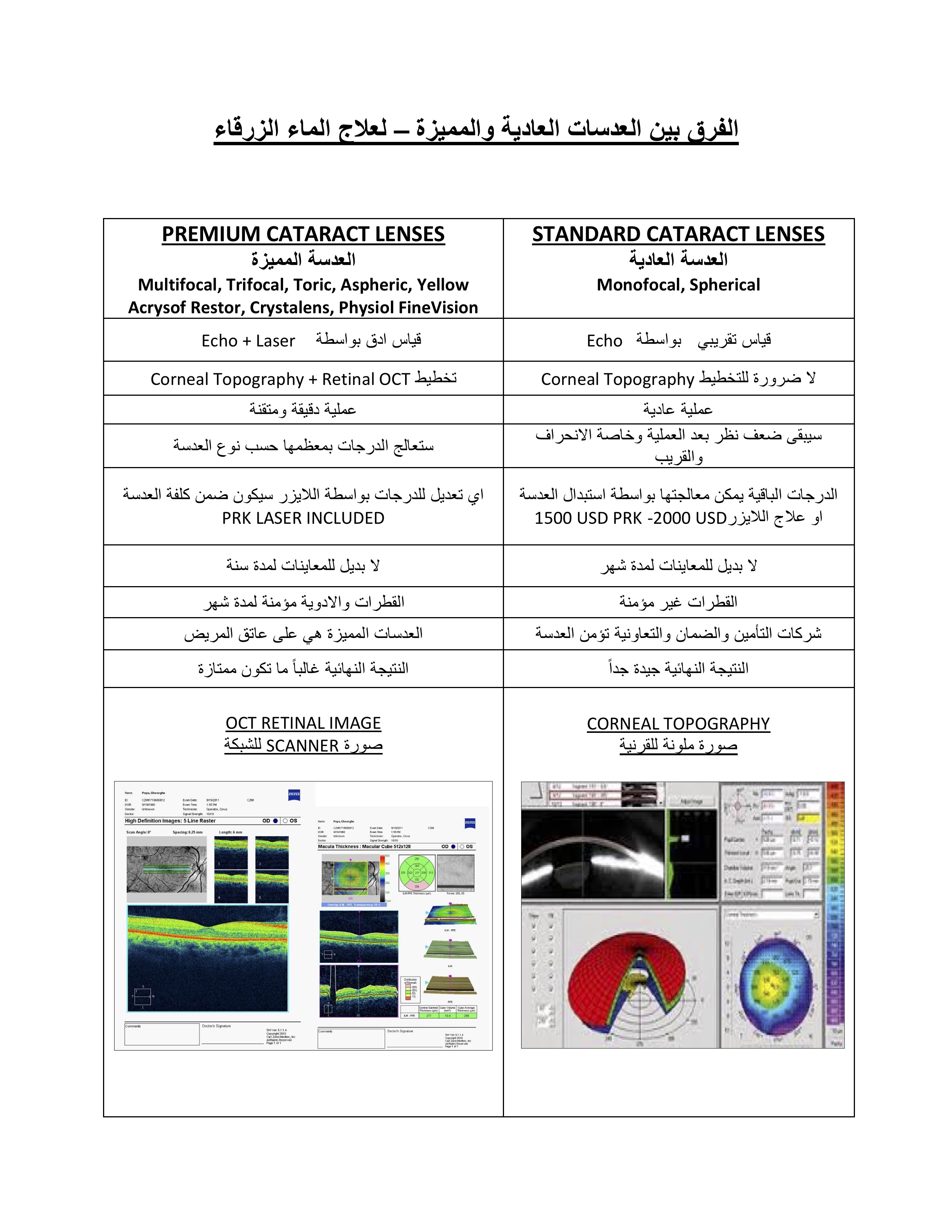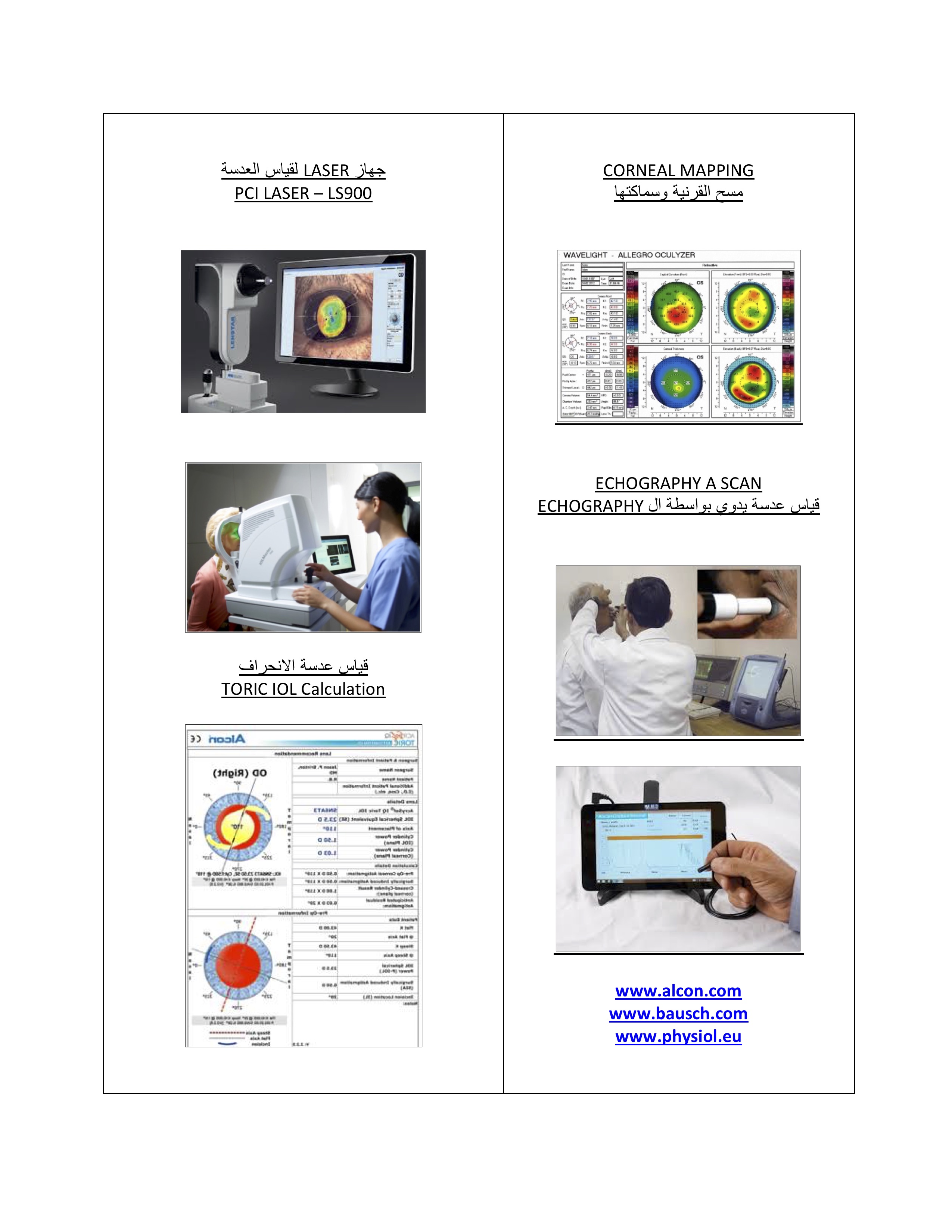Cataract Surgery
Cataract surgery is an operation to remove the eye’s lens when it is cloudy.
The purpose of your lens is to bend (refract) light rays that come into the eye to help you see. Your own lens should be clear, but with a cataract it is cloudy. Having a cataract can be like looking through a foggy or dusty car windshield. Things may look blurry, hazy or less colorful.
The only way to remove a cataract is with surgery. The ophthalmologist will recommend removing a cataract when it keeps you from doing things you want or need to do.
During cataract surgery, your cloudy natural lens is removed and replaced with a clear artificial lens. That lens is called an intraocular lens (IOL).
Treatment
UV Protection / Yellow / Natural Lenses: protect against harmful UV light UVA UVB..
Different Brands offer UV protection especially important for people with retinal problems like elderly above 55 y.o. and for people with high degrees (6D myopia and above).
Asphericity is a new characteristic design added to the new generation of lenses and it means that the lens is designed asymmetrically like the natural lens.. A new aspheric lens gives much clearer vision than standard spherical lenses especially for driving at night/ reading subtitles in low light conditions etc…
Silicone/ Acrylic/ Plastic/ PMMA /Collamer/ Hydrophobic/ Hydrophylic are different materials that are used to make the substance of the lens…They differ in the quality of vision, shape, flexibility, elasticity. More important is how dirty they get after a while and how much secretions get stuck on them. This is called secondary cataract or posterior capsular opacity PCO and affects vision in a lot of people after their cataract.. It is treated by YAG laser but it is better to prevent it.

